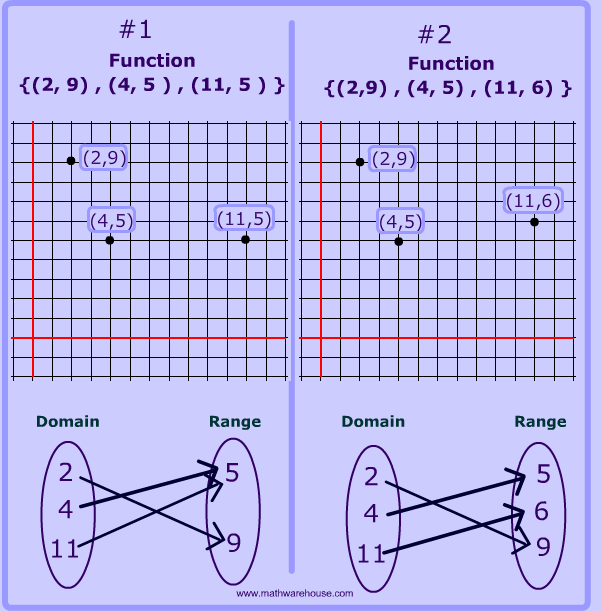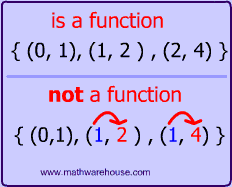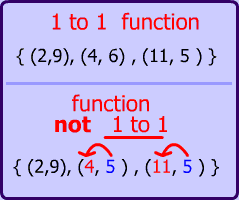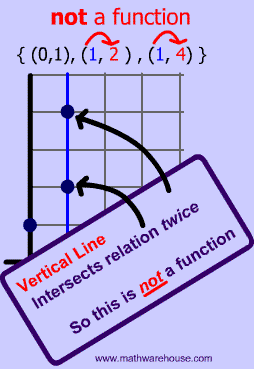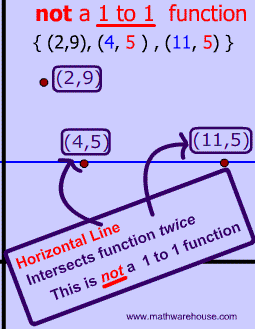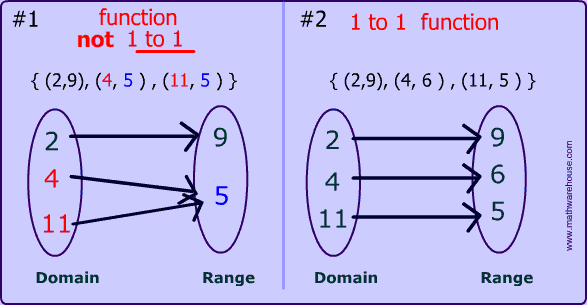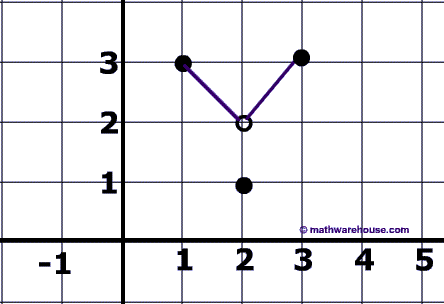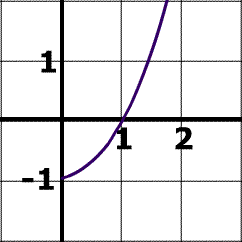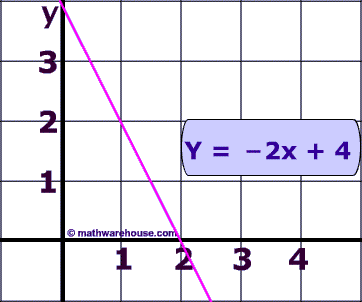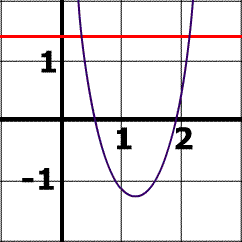What is a 1 to 1 function?
A special type of function.
Look at the two functions below, (# 1 and #2). They only differ by a single number .
One of the functions is one to one , and the other is not.
Which function below is 1 to 1?
Function #2 on the right side is the one to one function . In a one to one function, every element in the range corresponds with one and only one element in the domain.
So, #1 is not one to one because the range element. 5 goes with 2 different values in the domain (4 and 11).
